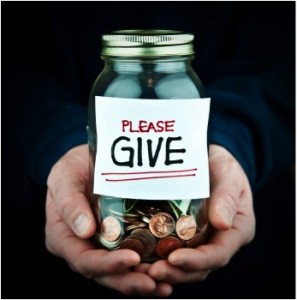March 2012
 Maximum Impact for your Charitable Buck
Maximum Impact for your Charitable Buck
In last month’s newsletter, I related my experience in Brazil handing out school supplies and other basic necessities to children in need. I was surprised by the response I received from our readers, asking if they could contribute directly to what I was doing. There are many charities and foundations asking people to contribute. Why would people want to contribute directly through me?
Here are some of their reasons:
1. Contributors do not trust that their money is getting used directly for the most pressing needs.
2. There are so many charities to choose from that people are overwhelmed and too busy to do research which ones have the greatest impact.
3. People are concerned that administrative costs are eroding their donations.
4. People feel out of touch with the direct results of the money they gave.
Many charities are working towards eradicating poverty in our world and it is working. Work For All is carefully assessing and following where our money goes and we are making sure that we get the best possible results from our expenditures. Administrative costs are covered, so 100% of your contribution goes towards eradicating systemic poverty.
– Melissa Leonard
PROGRESS ACHIEVED IN BATTLE AGAINST SYSTEMIC POVERTY
Dear Reader:
Some good news on our quest to eliminate systemic poverty:
According to a recent report from the World Bank, extreme poverty (people living on less than $1.25/ day) has been cut in half since 1990. This means one of the millennium goals of the United Nations has been achieved!
The following information indicates the World Bank’s statistics by region:
– East Asia and the Pacific: 14% lived in extreme poverty in 2008, down from 77% in 1981. In China, 13% (or 173 million people) lived on less than $1.25 a day in 2008.
– South Asia: The extreme poverty rate fell to 36% in 2008, from 61% in 1981.
– Latin America and the Caribbean: After peaking at 14% in 1984, the extreme poverty rate dropped to 6.5% in 2008.
– Middle East and North Africa: About 2.7% of the population — roughly 8.6 million people — lived in extreme poverty in 2008, down from 16.5 million in 1981.
– Eastern Europe and Central Asia: The extreme poverty rate is now below 0.5%, after peaking at 3.8% in 1999.
– Sub–Saharan Africa: Less than half the population (47%) lived in extreme poverty in 2008. That figure was 51% in 1981.
UN Secretary General, Ban Ki–Moon, recently stated, “We know that well–directed financing brings development dividends. We know that innovations – in technology, medicine, social policy and service delivery – can bring dramatic change. And we know that partnerships work.”
Please continue to help us partner in initiatives that really are making a difference.
– Jeremy Leonard
